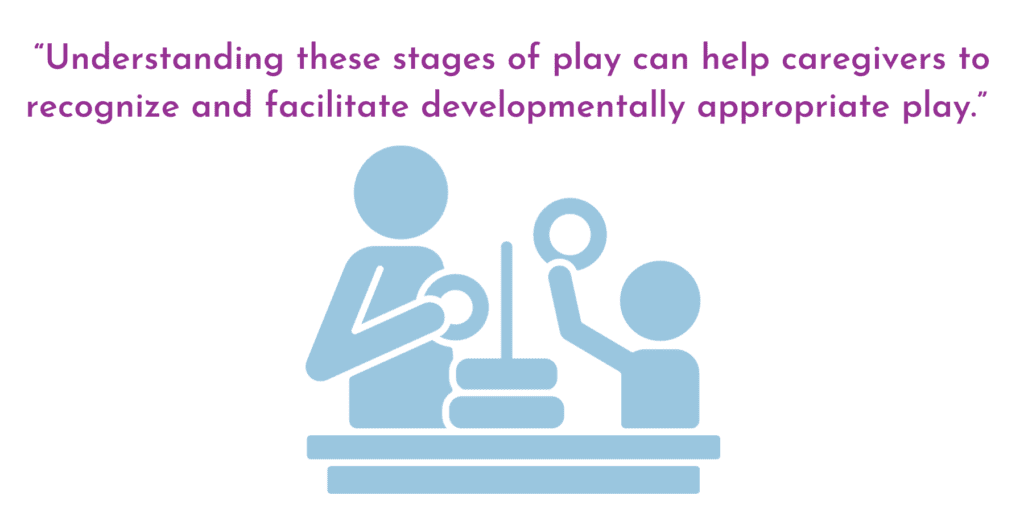In November, we discussed Social Play. This month, we are going to discuss another aspect of The Science of Play: Object Play. Below, we will walk through the stages of Object Play and what to look for as your child develops!
The first stage of Object Play is called Sensori-Motor Play and starts in infancy, continuing throughout the toddler years. This is when an infant explores their world by touching and mouthing. Examples of Sensori-Motor Play are shaking a rattle and mouthing a teething toy. Here is a link for info on ways to support your child’s Sensorimotor Play.
Relational Play is the next stage that begins in toddler years and continues throughout a child’s preschool years. During this stage, the child explores by stacking, building, and grouping. Examples of this kind of play can look like stacking blocks on top of one another and lining up dolls or figurines. Here is a link for info on ways to support your child’s Relational Play.
Next, during the toddler years comes Functional Play, which is when a child uses objects in the way that they are intended to be used. For example, a child may tap the top of a drum or put a puzzle piece into a puzzle. An extension of this play is Function Play with Pretense, during which a child uses actual or miniature objects in their intended way, but there is no actual outcome. For example, a child may pour from a toy coffee pot or sweep with a toy broom. Here is a link for info on ways to support your child’s Functional Play and Functional Play with Pretense.
The last stage of Object Play that starts in toddler years is Object Substitution. This is when a child uses objects as if they are something else; a child may use a block as a cell phone or a bowl as a hat. Here is a link for info on ways to support your child’s Object Substitution.

As the children become preschoolers, they typically begin the stage of Imagining Absent Objects as a form of play. This is when a child performs an action that suggests using an object in the actual object’s absence. For example, a child may fly an imaginary plane or pretend to eat. Here is a link for info on ways to support your child in Imagining Absent Objects. Assigning Absent Attributes is another form of play that develops during this time. Children assign roles, emotions, or attributes to themselves, objects, and other people. An example may be a child saying, “The baby is sad.” Here is a link for info on ways to support your child to Assign Absent Attributes. Social Pretend Play also begins and continues throughout this time. Children engage in play with others in a non-literal way; children may use Play-Doh to make a birthday cake. Here is a link for info on ways to support your child’s Pretend Play.
Understanding these stages of play can help caregivers to recognize and facilitate developmentally appropriate play. For more information on “Playing to Learn”, please visit Vanderbilt University’s Barton Lab at this link.








